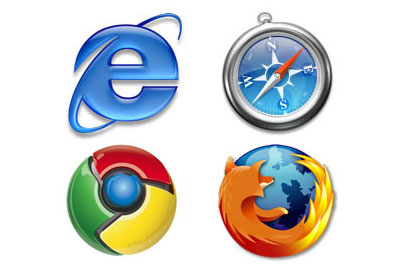Battle of the Betas - 4-way browser head-to-head
Which is the best browser right now for speeds, features and ease-of-use? We take a look at the latest betas of the four of the big contenders.


With the arrival of Safari 4 Beta, Windows users now have an enviable choice between four sparkly new web browsers. Indeed, like Firefox 3.1, the newest version of Apple's browser is now pitching for widespread public adoption, whilst still bearing its beta tag. Google's Chrome shed that designation in December, but it too is still under constant development. And on Thursday Microsoft plans to deliver the much-anticipated Internet Explorer 8, beta versions of which have been circulating for some months.
These four fledgling browsers all fulfil basically the same role: each will act as your window on the web, giving full support for web pages and applications within a multi-tabbed interface.
Behind the scenes, though, some fundamentally differing design philosophies are in play. Google Chrome sits at the minimalist end of the scale. Like Google's search interface, Chrome aims for simplicity, and the interface is stripped down to bare essentials. A single text field (dubbed the "Omnibar") acts as both address bar and search bar, and tabs protrude into the title bar to save space.
The middle ground is occupied by Microsoft's Internet Explorer 8 and Firefox 3.1. Outwardly, both browsers offer sober front-ends, which look very similar to their predecessors, with a distinct lack of high-profile new features to catch the eye. In both cases the developers have instead principally focused on making their browsers more efficient though IE8 does support some interesting new technologies, as we'll see below.
Which leaves the latest arrival, Safari 4, as the unchallenged sovereign of bells and whistles. The UI may look sparse at first glance (though it thankfully now wears a native Windows skin rather than the faux-Mac look of version 3); but once you start using Safari you quickly run into flashy graphical effects. It's an obvious affirmation of Apple's mantra that style is as important as function.
New features
This glamorous side of Safari can be seen in its two most distinctive new features. The first is the "top sites" view. When you open top sites, you'll see a shiny curved grid of clickable thumbnails enabling you to jump straight to a particular website. By default, Safari watches your browsing habits and populates the grid with your most commonly visited sites, but you can customise what appears where to suit your preferences, as well as changing the number of pages shown.
Get the ITPro daily newsletter
Sign up today and you will receive a free copy of our Future Focus 2025 report - the leading guidance on AI, cybersecurity and other IT challenges as per 700+ senior executives
Safari's other signature feature is its history view. All browsers let you track back through recently-visited pages, but Safari also gives you a visual thumbnail of each page, making it easy to spot the site you seek even if you don't recall its title.
Darien began his IT career in the 1990s as a systems engineer, later becoming an IT project manager. His formative experiences included upgrading a major multinational from token-ring networking to Ethernet, and migrating a travelling sales force from Windows 3.1 to Windows 95.
He subsequently spent some years acting as a one-man IT department for a small publishing company, before moving into journalism himself. He is now a regular contributor to IT Pro, specialising in networking and security, and serves as associate editor of PC Pro magazine with particular responsibility for business reviews and features.
You can email Darien at darien@pcpro.co.uk, or follow him on Twitter at @dariengs.
-
 Cleo attack victim list grows as Hertz confirms customer data stolen
Cleo attack victim list grows as Hertz confirms customer data stolenNews Hertz has confirmed it suffered a data breach as a result of the Cleo zero-day vulnerability in late 2024, with the car rental giant warning that customer data was stolen.
By Ross Kelly
-
 Lateral moves in tech: Why leaders should support employee mobility
Lateral moves in tech: Why leaders should support employee mobilityIn-depth Encouraging staff to switch roles can have long-term benefits for skills in the tech sector
By Keri Allan